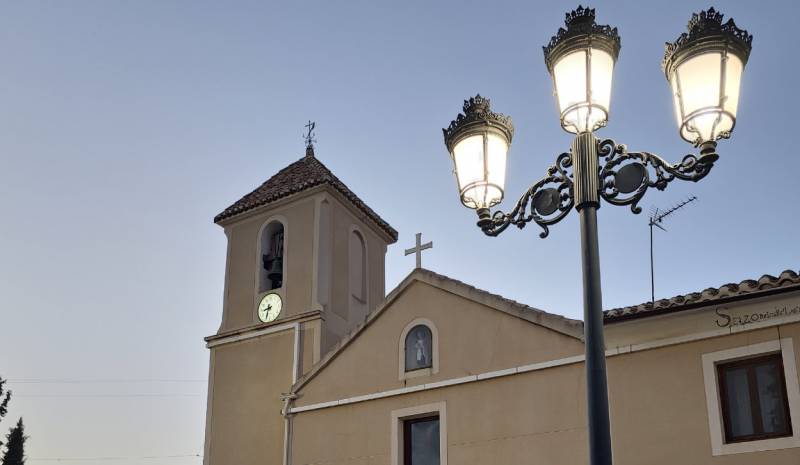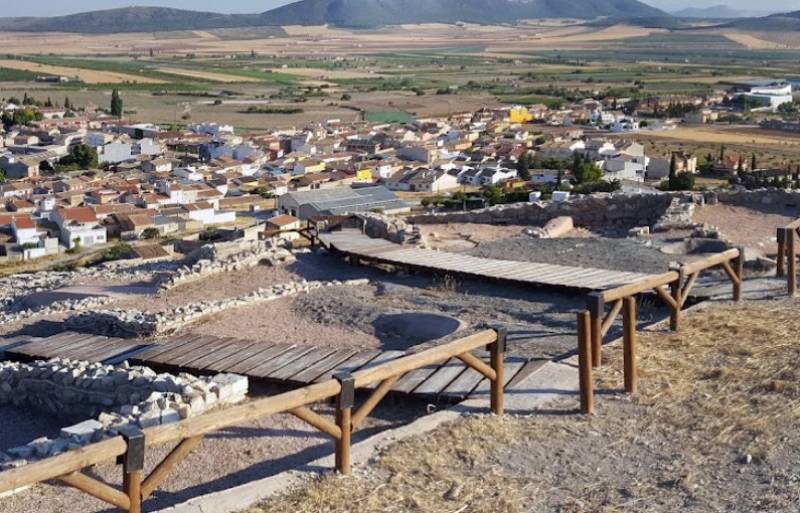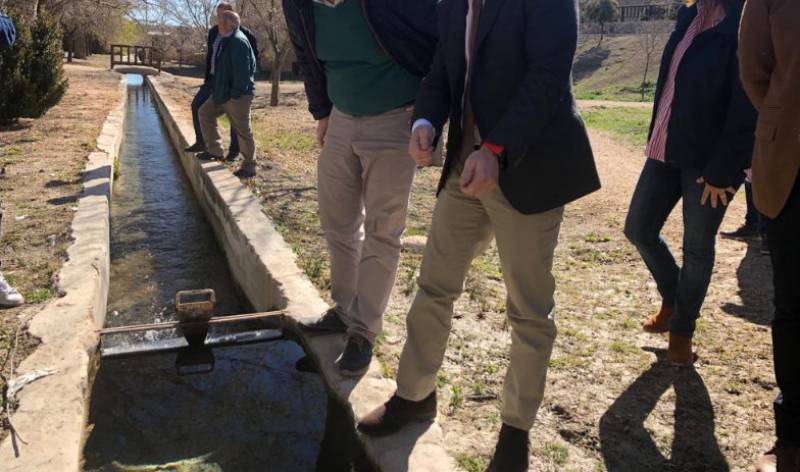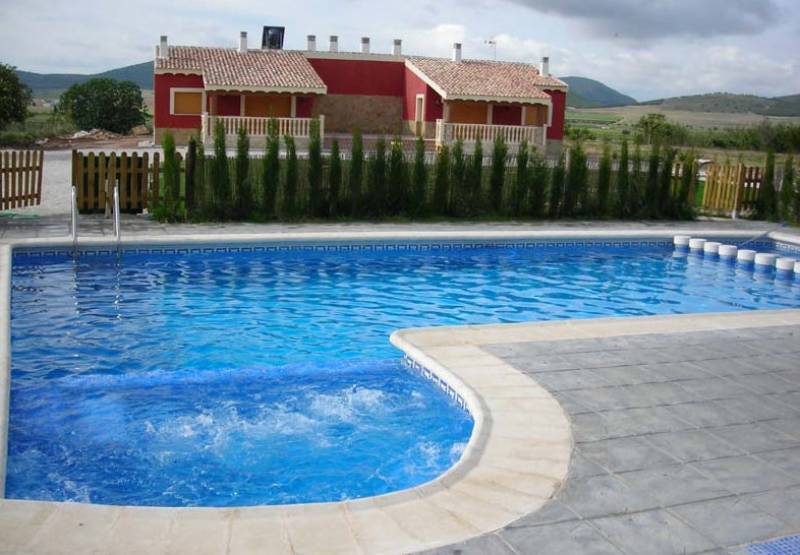
To be listed on the CAMPOSOL TODAY MAP please call +34 968 018 268.
A brief history of Archivel
Archivel has evolved from a primitive human settlement 5,000 years ago to a popular rural tourist destination
 Humans settled in Archivel It is thought that the village was first given its current name some time in the late 16th century, although it is possible that a Roman settlement existed in the same spot in the first centuries AD, possibly named Vergilia. One author in the 19th century even speculated that before the arrival of the Romans the Iberian tribes settled here in a place they called Arcilacis, but the first known reference to the current name comes from 1571, when the area was affected by a plaque of locusts!
Humans settled in Archivel It is thought that the village was first given its current name some time in the late 16th century, although it is possible that a Roman settlement existed in the same spot in the first centuries AD, possibly named Vergilia. One author in the 19th century even speculated that before the arrival of the Romans the Iberian tribes settled here in a place they called Arcilacis, but the first known reference to the current name comes from 1571, when the area was affected by a plaque of locusts!
Prehistory in Archivel
A long time prior to that, though, the area attracted prehistoric humans due to the abundance of freshwater streams, and on the slopes of the hill known as El Cerro de la Fuente remains have been found of a Copper Age settlement which was later taken over by the Argarics in the second millennium BC. Part of wall which enclosed this settlement is still intact and some of the archaeological findings are on display in the archaeological museum of La Soledad in Caravaca.
One of the highlights is a bronze idol which belongs to the Melgares de Aguilar family.
The Romans and the Moors
 Most of the built-up area stands on top of an old Iberian burial ground, while on the Cerro de la Fuente (known locally as “El Santo”) a late Roman fortress has been excavated, dating from the time of the civil wars between Pompey and Julius Caesar. The relics discovered from this time include crockery on the Cerro de la Fuente and a coin from the time of Claudius which was unearthed in Las Casicas.
Most of the built-up area stands on top of an old Iberian burial ground, while on the Cerro de la Fuente (known locally as “El Santo”) a late Roman fortress has been excavated, dating from the time of the civil wars between Pompey and Julius Caesar. The relics discovered from this time include crockery on the Cerro de la Fuente and a coin from the time of Claudius which was unearthed in Las Casicas.
Many of the building blocks used by the Iberians and the Romans were taken by locals during the repopulation of the 16th century to build their own homes.
During the period of Moorish dominance in this part of Spain (8th to 13th centuries) it seems that the area was largely deserted, and it was not until the 14th and 15th centuries that repopulation began after the Reconquista by Christian forces from the kingdoms of Castilla and Aragón.
The late Middle Ages
The long period of repopulation was of course helped by the abundant natural supply of fresh water, leading to advantageous conditions for crop and cattle farming as well as simple human subsistence. But at the same time the water supply eventually caused a conflict in which Archivel was caught in the middle, as the authorities in Lorca requested again and again that the water from the Ojos de Archivel should be redirected to the west instead of remaining in the area of Caravaca.
 This occurred, for example, in 1742, when King Carlos III appointed a delegate to look into the dispute, and again as late as 1854: this time it was only after the intervention of Queen Isabel II that the argument was settled in favour of Caravaca.
This occurred, for example, in 1742, when King Carlos III appointed a delegate to look into the dispute, and again as late as 1854: this time it was only after the intervention of Queen Isabel II that the argument was settled in favour of Caravaca.
19th century
Throughout the 19th century the economy relied almost solely on cattle farming, although there were also 6 flour mills, a coppersmith and two liquor distilleries. At home, the womenfolk wove linen and hemp cloth which came from Caravaca, Murcia, Orihuela and parts of Andalucía.
Administrative independence from Caravaca was first granted to Archivel in 1821, when it became a municipality in its own right with Pedro Bernad Carreño as Mayor. Another 10 years followed from 1837 to 1847 with the post of Mayor held by José María Fernández Quevedo, with the municipality of Archivel including the villages of Barranda, Benablón and Tartamudo.
The light of independent feeling briefly stirred again in 1874 when the locals protested against taxes levied in Caravaca and in Murcia, but this uprising ultimately came to nothing.
Modern times
 In the 20th century the village prospered as it gradually became a popular country retreat for visitors, with the added attraction of the archaeological remains nearby. Rural accommodation has been reformed and re-occupied to encourage tourism, and it is now partly a dormitory town for people who work in Caravaca but enjoy life in a more natural environment, as well as a hotspot for national and even international tourism.
In the 20th century the village prospered as it gradually became a popular country retreat for visitors, with the added attraction of the archaeological remains nearby. Rural accommodation has been reformed and re-occupied to encourage tourism, and it is now partly a dormitory town for people who work in Caravaca but enjoy life in a more natural environment, as well as a hotspot for national and even international tourism.
Further information about Caravaca is available from the tourist office (Plaza de España, 7, telephone 968 702424, email turismo@caravacadelacruz.es).
Or for more local information, including the Holy Jubilee Year as well as local news and what’s on, go to the home page of Caravaca Today.
Oficina de Turismo de Caravaca de la Cruz
 More information about the places of interest which can be visited in the municipality of Caravaca de la Cruz, along with what's on and local news can be found in the Caravaca Today.
More information about the places of interest which can be visited in the municipality of Caravaca de la Cruz, along with what's on and local news can be found in the Caravaca Today.
Caravaca de la Cruz, in the north-west of the Region of Murcia, is one of only 5 Holy Cities in the Roman Catholic world, a centre of pilgrimage, along with Rome, Jerusalem, Santiago de Compostela and Santo Toribio de Liebana, and is home to the Cross of Caravaca, the Vera Cruz.
The status of Holy City was bestowed by Pope John Paul II in 1998, granting the City a Permanent Jubilee year every 7 years for perpetuity, the first one held in 2003 and the next in 2024.

The strategic and natural advantages of Caravaca de la Cruz have attracted the attention of settlers for more than 800,000 years, the Cueva Negra yielding remains of Homo Heidelbergensis, forbears of the Neanderthals and the municipality also houses important archaeological remains from the Argaric, Iberian and Roman cultures. many of these can be seen in the Municipal Archaeological Museum.
 As a border town caught between the Catholic forces of Castille and the last remaining Moorish stronghold in Spain, Granada, Caravaca had a turbulent medieval history, but it was during this period that the legend of the Cross of Caravaca was born, bringing the religious orders which shaped the structure of Caravaca today, with its impressive hilltop castle and eclectic collection of churches and monasteries, religious tourism today being a backbone of the town´s economy.
As a border town caught between the Catholic forces of Castille and the last remaining Moorish stronghold in Spain, Granada, Caravaca had a turbulent medieval history, but it was during this period that the legend of the Cross of Caravaca was born, bringing the religious orders which shaped the structure of Caravaca today, with its impressive hilltop castle and eclectic collection of churches and monasteries, religious tourism today being a backbone of the town´s economy.
Caravaca de la Cruz is a municipality with important natural resources, including extensive forests, part of which have protected status due to their wealth of flora and fauna, and due to the abundant water supplies is also a major area for canned fruit production, apricots in particular being an important crop.
 Caravaca is renown for its important May Fiestas, held in honour of the Vera Cruz, which also incorporate the Moors and Christians celebrations and the Running of the Wine Horses.
Caravaca is renown for its important May Fiestas, held in honour of the Vera Cruz, which also incorporate the Moors and Christians celebrations and the Running of the Wine Horses.
Caravaca de la Cruz is also the home of Europe´s largest collection of ethnic instruments at Barranda, the Museo de Música Étnica Barranda and is the location of the Barranda festival de Cuadrillas, which celebrates the Region's ethnic music traditions.
The municipality is home to around 26,000 inhabitants and shares boundaries with Moratalla, Cehegín, Lorca, Puebla de Don Fadrique in the province of Granada and Vélez-Blanco in the province of Almería.
Opening times:
Weekdays: 10.00 to 14.00 and 16.30 to 19.30
Saturdays: 10.30 to 14.00 and 16.30 to 19.30
Sundays and public holidays: 10.30 to 14.00
Click for map, Caravaca de la Cruz Tourist Office























